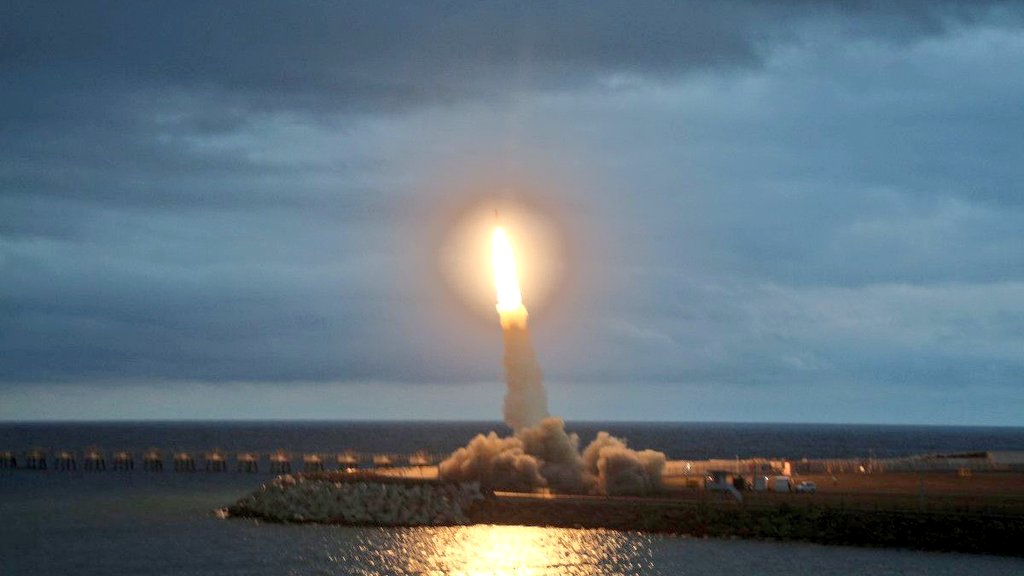Turkey test-fired a short-range ballistic missile (SRBM), newly developed by Roketsan and named Tayfun (typhoon), over the Black Sea on Oct. 18, 2022. Tayfun was fired from a mobile launcher in the city of Rize on the Black Sea coast and traveled 561 kilometers, or about 350 miles, a range more than twice that of current missiles in Turkey’s arsenal, before crashing off the coast of the Black Sea port of Sinop. Tayfun has the longest range of all missiles developed by the Turkish defense industry. Turkish President Recep Tayyip Erdoğan has vowed that Turkey will further increase the range of its ballistic missiles. “Currently, our missile range is 565 kilometers. This is insufficient; we will increase it to 1,000 kilometers,” Erdoğan said on Jan. 14.
Erdoğan is trying to consolidate his political power by profiting from developments in the defense industry, presenting all achievements in recent years as if they were the result of activities carried out under his rule. So how did Turkey acquire the capability to produce a missile like the Tayfun SRBM?
Turkey’s attempts to acquire the technology and know-how to manufacture its missiles domestically began in the 1990s, when Turkey decided to improve defense cooperation with China in an attempt at diversification in the defense field. Another reason for Turkey’s desire to establish defense cooperation with China was the reluctance and sometimes refusal of Turkey’s defense cooperation partners, such as the United States and Germany, to provide military technology to Turkey in joint projects. In other words, the refusal of Turkey’s traditional partners to cooperate in the defense industry partially paved the way for Turkish-Chinese cooperation.
In the second half of the 1990s, Turkey signed two joint defense industry projects with China to develop and produce Chinese missile systems under license in Turkey. There were two main reasons for the Turkish involvement in these two collaborative projects with China. The first was the increasing missile threat around Turkey in the mid-1990s and the realization by Turkish authorities that Turkey had serious deficiencies in missile defense systems. Turkish authorities opted to develop indigenous missiles to strengthen the deterrence capability of the Turkish Armed Forces (TSK). The second reason was the positive response from Chinese authorities. Turkey held consultations with several countries on missile systems and received a positive response from China to its proposals, especially regarding the development of missile technology in Turkey through technology transfer.
The first project was signed in 1997 for the unguided multiple-launch rocket system (MLRS) WS -1. This deal was the first known export of this artillery system by China. The first battery of WS -1 MLRS was delivered to the Turkish Land Forces in December 1998 by Chinese defense contractor Sichuan Aerospace Industry Corporation (SCAIC), one of the major developers and manufacturers of the MLRS. The remaining five batteries were produced through technology transfer under the Turkish name Kasırga (whirlwind). The total cost of the project was reportedly about $250 million. A Kasırga battery can fire four unguided 302-mm missiles, as a salvo or individually, over a range of 100 kilometers.
The second joint defense industry project between Turkey and China was signed in 1999 for the B611 SRBM. According to the agreement, a B611 battery and more than 200 missiles were manufactured by Roketsan in Turkey under the Turkish designation Yıldırım (Lightning) in cooperation with Chinese defense contractor China Precision Machinery Import-Export Corporation (CPMIEC). The total cost of the project was reportedly around $300 million. A Yıldırım battery can fire a 600mm guided missile over a range of 152 kilometers. A solid propellant engine powers a single missile, which can be fitted with a conventional high explosive (HE) warhead and has a length of 6.1 meters and a total weight of 480 kilograms. Inertial navigation system (INS)-based course correction provided 150-meter accuracy for the Yıldırım missile. Thanks to the cooperation with China, the Turkish defense industry has produced the first indigenous SRBM Yıldırım with a range of 150 kilometers.
In 2009 the Presidency of the Defense Industry (SSB) signed a contract called Project-B with Roketsan to increase the range of Yıldırım missiles from 150 to 300 kilometers. The extended-range missile was named Bora (Storm). Roketsan received technological support from CPMIEC to produce the Bora. A new INS guidance system, made in the US, improved accuracy from 150 meters to less than 50 meters. A successful test firing took place in the spring of 2014, and the first deliveries occurred shortly after that, probably in 2015 or 2016. Bora represents the second milestone in the Turkish military’s multi-year missile development plan: indigenous ballistic missiles with a range of 300 kilometers.
The Turkish defense industry’s current production of the 561-kilometer-range Tayfun ballistic missile was achieved as a result of a multi-year missile development plan initiated and led by the TSK in the 1990s. The cooperation and technology transfer between Roketsan and CPMIEC played an important role in Bora. Contrary to Erdoğan’s claims, the achievements of the defense industry today are not only due to Erdoğan’s 20 years in power. They are based primarily on the TSK’s strategic decision in the 1990s to pave the way for co-production under license in Turkey for technology transfer.
By: Fatih Yurtsever – a former naval officer in the Turkish Armed Forces. He is using a pseudonym out of security concerns.
Source: Turkish Minute



